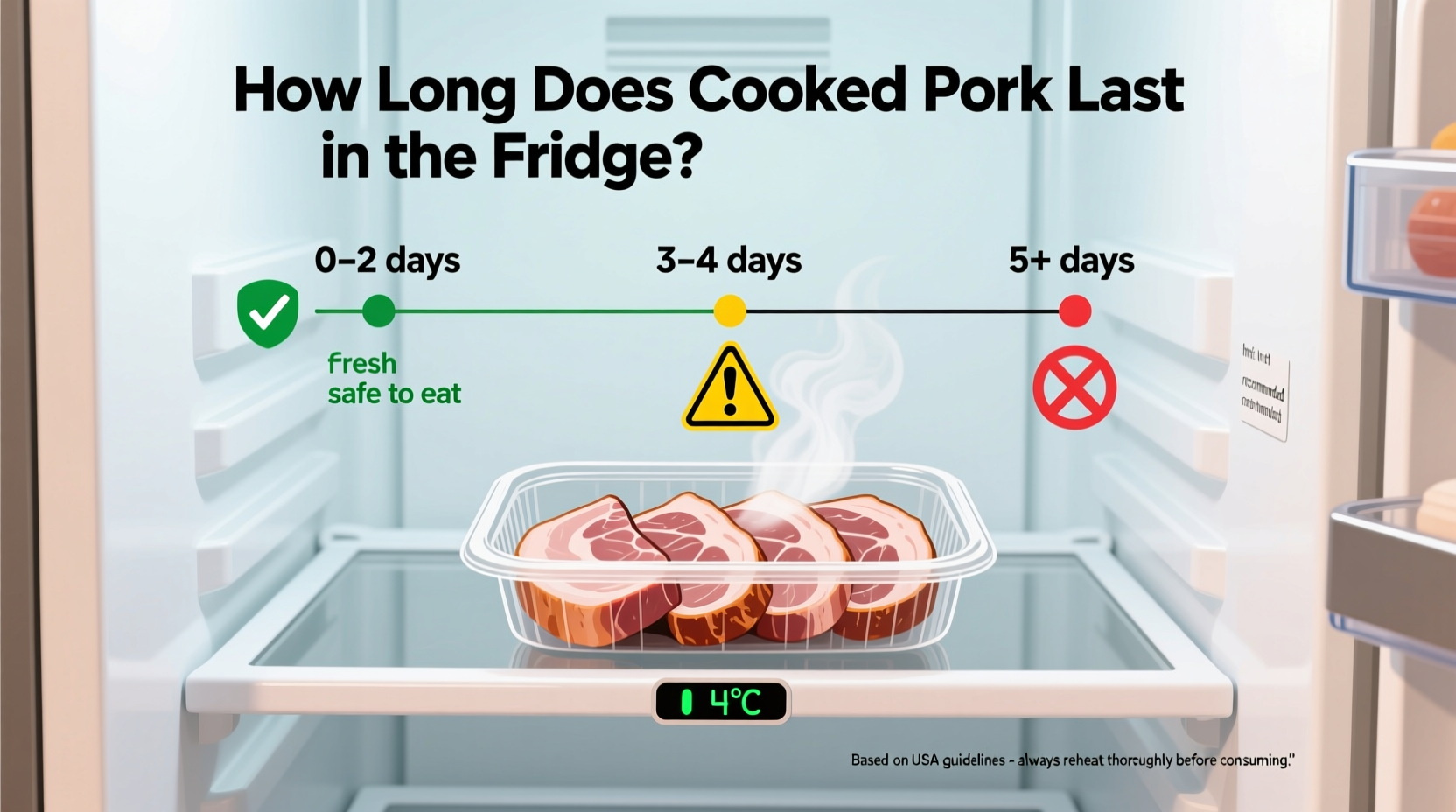Understanding proper food storage isn't just about avoiding waste—it's crucial for preventing foodborne illness. Each year, 48 million Americans suffer from food poisoning, with improper storage of leftovers being a major contributor. As someone who's worked in professional kitchens for over 15 years, I've seen how small storage mistakes can lead to big health consequences.
Why Proper Cooked Pork Storage Matters
When pork is cooked, harmful bacteria that might have been present are destroyed—but new contamination can occur during handling and storage. The "danger zone" for bacterial growth is between 40°F and 140°F, where pathogens multiply rapidly. Refrigeration slows this process but doesn't stop it completely.
| Cooked Food Type | Refrigerator Storage (40°F or below) | Freezer Storage (0°F or below) |
|---|---|---|
| Cooked pork (all cuts) | 3-4 days | 2-3 months |
| Cooked pork with gravy or sauce | 2 days | 1-2 months |
| Leftover pork dishes (casseroles, soups) | 3-4 days | 2-3 months |
This food storage timeline comes directly from the USDA Food Safety and Inspection Service, the authoritative source for food safety guidelines in the United States. Their research shows that after 4 days, even properly refrigerated cooked pork has a significantly higher risk of containing harmful bacteria like Staphylococcus aureus and Listeria monocytogenes.
Maximizing Your Cooked Pork's Refrigerator Life
Follow these professional storage techniques to ensure your cooked pork stays safe as long as possible:
Immediate Cooling is Critical
Don't leave cooked pork at room temperature for more than 2 hours (1 hour if room temperature exceeds 90°F). The faster you get it cooled and refrigerated, the longer it will remain safe:
- Slice or divide large portions into smaller containers to cool faster
- Avoid stacking containers in the refrigerator until they've cooled
- Use shallow containers (no deeper than 2 inches) for quicker cooling
Proper Storage Containers Make a Difference
The container you choose affects both safety and quality:
- Airtight containers prevent moisture loss and cross-contamination
- Glass containers maintain temperature better than plastic
- Vacuum sealing extends refrigerator life by 1-2 days
- Avoid storing in aluminum foil for more than 1 day (can react with acidic foods)

When Is Cooked Pork No Longer Safe?
Don't rely solely on the calendar—always check for these spoilage signs before consuming:
| Sign of Spoilage | What to Look For | Immediate Action |
|---|---|---|
| Smell | Sour, ammonia-like, or rotten odor | Discard immediately |
| Texture | Slippery or slimy film on surface | Discard immediately |
| Color | Grayish-green tint or unusual discoloration | Discard immediately |
| Mold | Any visible mold growth | Discard entire portion |
According to research from the Centers for Disease Control and Prevention, never taste food to determine if it's safe. Pathogenic bacteria that cause foodborne illness don't always produce noticeable changes in food appearance, smell, or taste.
Special Considerations for Different Pork Dishes
Not all cooked pork products have the same refrigerator lifespan. These factors affect how long your leftovers remain safe:
- Fatty cuts (like pork belly) may develop rancidity faster due to fat oxidation
- Sauced dishes (like pulled pork with BBQ sauce) have shorter shelf life due to moisture content
- Ground pork dishes spoil faster than whole cuts due to increased surface area
- Marinated pork with acidic components may have slightly extended shelf life
Freezing Cooked Pork for Longer Storage
When you can't finish your pork within 3-4 days, freezing is your best option:
- Portion into meal-sized servings before freezing
- Remove as much air as possible from freezer bags
- Label with contents and date (use within 2-3 months for best quality)
- Thaw in refrigerator—not at room temperature—for 24-48 hours
While frozen pork remains safe indefinitely, quality degrades over time. The FDA Food Code recommends consuming frozen cooked pork within 2-3 months for optimal texture and flavor.
Reheating Cooked Pork Safely
Proper reheating is the final safety step:
- Heat to an internal temperature of 165°F (use a food thermometer)
- Add moisture when reheating to prevent drying out
- Stir frequently when reheating in microwave for even heating
- Consume reheated pork within 2 hours (don't return to refrigerator)
Common Misconceptions About Pork Storage
Let's clear up some dangerous myths I've encountered in professional kitchens:
- "If it smells okay, it's safe" - Many harmful bacteria don't produce noticeable odors
- "The 5-second rule applies to leftovers" - Bacteria transfer is immediate upon contact
- "I can just cut off the moldy part" - Mold roots penetrate deeper than visible
- "My refrigerator is cold enough because it feels cold" - Use a thermometer to verify (should be 40°F or below)
Remember that food safety guidelines aren't arbitrary—they're based on extensive research into bacterial growth patterns. When in doubt about your cooked pork's safety, follow the food handler's golden rule: "When unsure, throw it out!"











 浙公网安备
33010002000092号
浙公网安备
33010002000092号 浙B2-20120091-4
浙B2-20120091-4